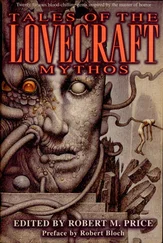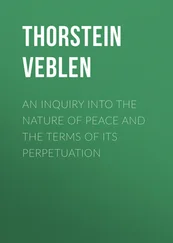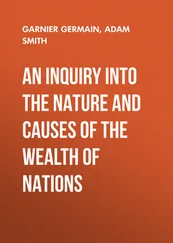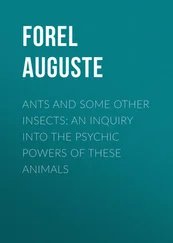Robert Pirsig - Lila. An Inquiry Into Morals
Здесь есть возможность читать онлайн «Robert Pirsig - Lila. An Inquiry Into Morals» весь текст электронной книги совершенно бесплатно (целиком полную версию без сокращений). В некоторых случаях можно слушать аудио, скачать через торрент в формате fb2 и присутствует краткое содержание. Жанр: Современная проза, на английском языке. Описание произведения, (предисловие) а так же отзывы посетителей доступны на портале библиотеки ЛибКат.
- Название:Lila. An Inquiry Into Morals
- Автор:
- Жанр:
- Год:неизвестен
- ISBN:нет данных
- Рейтинг книги:3 / 5. Голосов: 1
-
Избранное:Добавить в избранное
- Отзывы:
-
Ваша оценка:
- 60
- 1
- 2
- 3
- 4
- 5
Lila. An Inquiry Into Morals: краткое содержание, описание и аннотация
Предлагаем к чтению аннотацию, описание, краткое содержание или предисловие (зависит от того, что написал сам автор книги «Lila. An Inquiry Into Morals»). Если вы не нашли необходимую информацию о книге — напишите в комментариях, мы постараемся отыскать её.
Lila. An Inquiry Into Morals — читать онлайн бесплатно полную книгу (весь текст) целиком
Ниже представлен текст книги, разбитый по страницам. Система сохранения места последней прочитанной страницы, позволяет с удобством читать онлайн бесплатно книгу «Lila. An Inquiry Into Morals», без необходимости каждый раз заново искать на чём Вы остановились. Поставьте закладку, и сможете в любой момент перейти на страницу, на которой закончили чтение.
Интервал:
Закладка:
Biological evolution can be seen as a process by which weak Dynamic forces at a subatomic level discover stratagems for overcoming huge static inorganic forces at a superatomic level. They do this by selecting superatomic mechanisms in which a number of options are so evenly balanced that a weak Dynamic force can tip the balance one way or another.
The particular atom that the weak Dynamic subatomic forces have seized as their primary vehicle is carbon. All life contains carbon yet a study of properties of carbon atom shows that except for the extreme hardness of one of its crystalline forms there is not much unusual about it. In terms of other physical constants of melting point, conductivity, ionization, and so on, it does just about what its position on the periodic table of the elements suggests it might do. Certainly there’s no hint of any miraculous powers waiting to spring chemistry professors upon a lifeless planet.
One physical characteristic that makes carbon unique is that it is the lightest and most active of the group IV of atoms whose chemical bonding characteristics are ambiguous. Usually the positively valenced metals in groups I through III combine chemically with negatively valenced non-metals in groups V through VII and not with other members of their own group. But the group containing carbon is halfway between the metals and non-metals, so that sometimes carbon combines with metals and sometimes with non-metals, and sometimes it just sits there and doesn’t combine with anything, and sometimes it combines with itself in long chains and branched trees and rings.
Phædrus thought this ambiguity of carbon’s bonding preferences was the situation the weak Dynamic subatomic forces needed. Carbon bonding was a balanced mechanism they could take over. It was a vehicle they could steer to all sorts of freedom by selecting first one bonding preference and then another in an almost unlimited variety of ways.
And what a variety has been chosen. Today there are more than two million known compounds of carbon, roughly twenty times as many as all the other known chemical compounds in the world. The chemistry of life is the chemistry of carbon. What distinguishes all the species of plants and animals is, in the final analysis, differences in the way carbon atoms choose to bond.
But the invention of Dynamic carbon bonding represents only one kind of evolutionary stratagem. The other kind is preservation of what has been invented. A Dynamic advance is meaningless unless it can find some static pattern with which to protect itself from degeneration back to the conditions that existed before the advance was made. Evolution can’t be a continuous forward movement. It must be a process of ratchet-like steps in which there is a Dynamic movement forward up some new incline and then, if the result looks successful, a static latching-on of the gain that has been made; then another Dynamic advance, then another static latch.
What the Dynamic force had to invent in order to move up the molecular level and stay there was a carbon molecule that would preserve its limited Dynamic freedom from inorganic laws and at the same time resist deterioration back to simple compounds of carbon again. A study of nature shows the Dynamic force was not able to do this but got around the problem by inventing two molecules: a static molecule able to resist abrasion, heat, chemical attack and the like; and a Dynamic one, able to preserve the subatomic indeterminacy at a molecular level and try everything in the ways of chemical combination.
The static molecule, an enormous, chemically dead, plastic-like molecule called protein, surrounds the Dynamic one and prevents attack by forces of light, heat and other chemicals that would prey on its sensitivity and destroy it. The Dynamic one, called DNA, reciprocates by telling the static one what to do, replacing the static one when it wears out, replacing itself even when it hasn’t worn out, and changing its own nature to overcome adverse conditions. These two kinds of molecules, working together, are all there is in some viruses, which are the simplest forms of life.
This division of all biological evolutionary patterns into a Dynamic function and a static function continues on up through higher levels of evolution. The formation of semi-permeable cell walls to let food in and keep poisons out is a static latch. So are bones, shells, hide, fur, burrows, clothes, houses, villages, castles, rituals, symbols, laws and libraries. All of these prevent evolutionary degeneration.
On the other hand, the shift in cell reproduction from mitosis to meiosis to permit sexual choice and allow huge DNA diversification is a Dynamic advance. So is the collective organization of cells into metazoan societies called plants and animals. So are sexual choice, symbiosis, death and regeneration, communality, communication, speculative thought, curiosity and art. Most of these, when viewed in a substance-centered evolutionary way are thought of as mere incidental properties of the molecular machine. But in a value-centered explanation of evolution they are close to the Dynamic process itself, pulling the pattern of life forward to greater levels of versatility and freedom.
Sometimes a Dynamic increment goes forward but can find no latching mechanism and so fails and slips back to a previous latched position. Whole species and cultures get lost this way. Sometimes a static pattern becomes so powerful it prohibits any Dynamic moves forward. In both cases the evolutionary process is halted for a while. But when it’s not halted the result has been an increase in power to control hostile forces or an increase in versatility or both. The increase in versatility is directed toward Dynamic Quality. The increase in power to control hostile forces is directed toward static quality. Without Dynamic Quality the organism cannot grow. Without static quality the organism cannot last. Both are needed.
Now when we come to the chemistry professor, and see him studying his empirically gathered data, trying to figure out what it means, this person makes more sense. He’s not just some impartial visitor from outer space looking in on all this with no purpose other than to observe. Neither is he some static, molecular, objective, biological machine, doing all this for absolutely no purpose whatsoever. We see that he’s conducting his experiments for exactly the same purpose as the subatomic forces had when they first began to create him billions of years ago. He’s looking for information that will expand the static patterns of evolution itself and give both greater versatility and greater stability against hostile static forces of nature. He may have personal motives such as pure fun, that is, the Dynamic Quality of his work. But when he applies for funds he will normally and properly tie his request to some branch of humanity’s overall evolutionary purpose.
12
Phædrus had once called metaphysics the high country of the mind — an analogy to the high country of mountain climbing. It takes a lot of effort to get there and more effort when you arrive, but unless you can make the journey you are confined to one valley of thought all your life. This high country passage through the Metaphysics of Quality allowed entry to another valley of thought in which the facts of life get a much richer interpretation. The valley spreads out into a huge fertile plain of understanding.
In this plain of understanding static, patterns of value are divided into four systems: inorganic patterns, biological patterns, social patterns and intellectual patterns. They are exhaustive. That’s all there are. If you construct an encyclopedia of four topics — Inorganic, Biological, Social and Intellectual — nothing is left out. No thing, that is. Only Dynamic Quality, which cannot be described in any encyclopedia, is absent.
Читать дальшеИнтервал:
Закладка:
Похожие книги на «Lila. An Inquiry Into Morals»
Представляем Вашему вниманию похожие книги на «Lila. An Inquiry Into Morals» списком для выбора. Мы отобрали схожую по названию и смыслу литературу в надежде предоставить читателям больше вариантов отыскать новые, интересные, ещё непрочитанные произведения.
Обсуждение, отзывы о книге «Lila. An Inquiry Into Morals» и просто собственные мнения читателей. Оставьте ваши комментарии, напишите, что Вы думаете о произведении, его смысле или главных героях. Укажите что конкретно понравилось, а что нет, и почему Вы так считаете.











